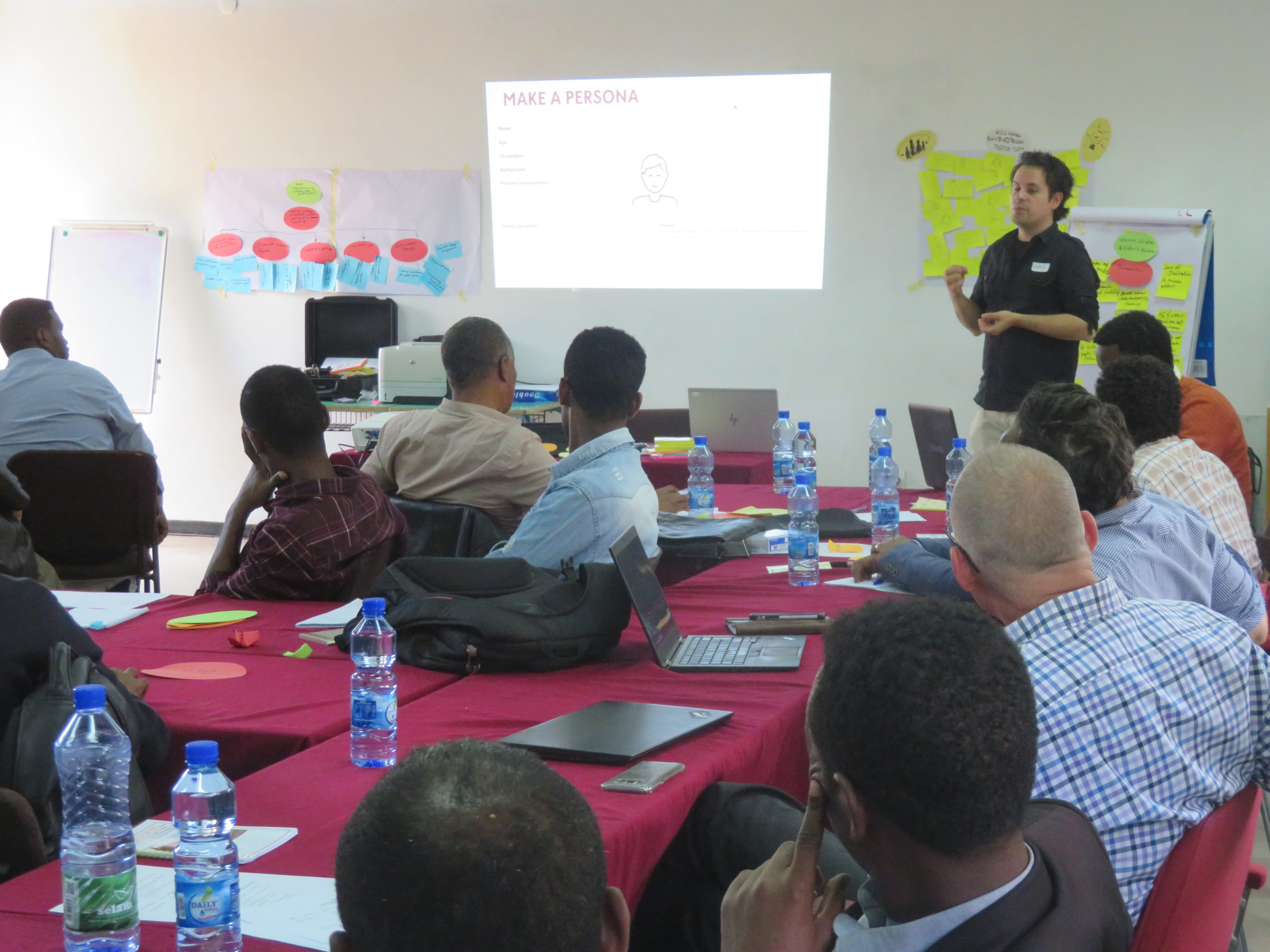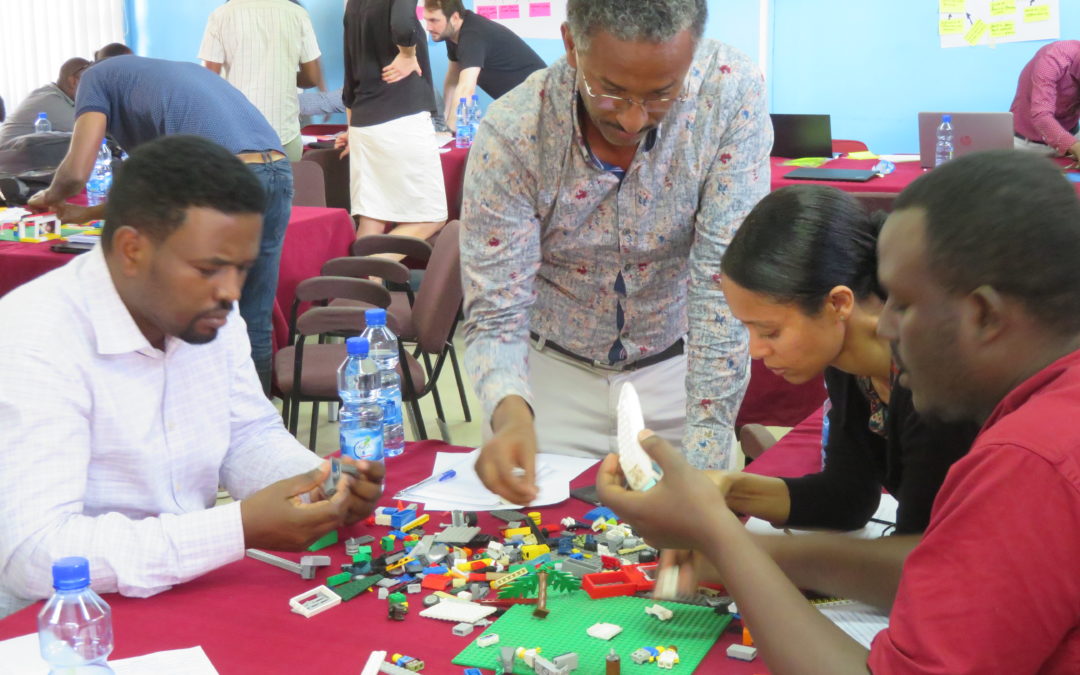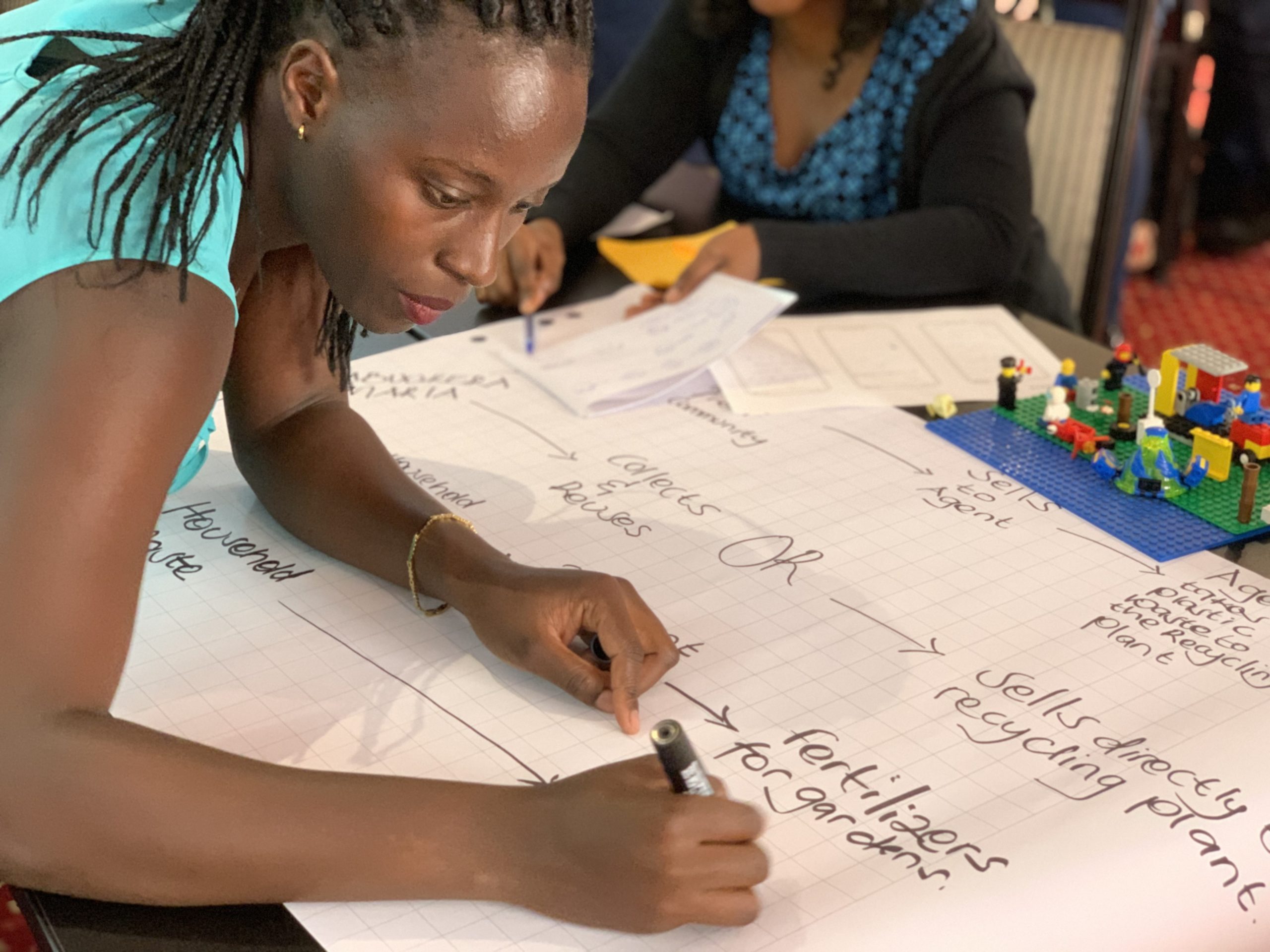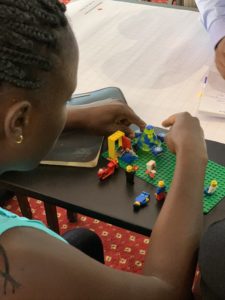Learnings from applying design thinking as a planning tool for projects in the humanitarian field
Written by Christian Kloyber, Innovation Facilitator at Austrian Red Cross
Today my phone displayed a picture of what I did exactly a year ago. It was February 18th 2020 and I delivered the second of two face-to-face design thinking workshops in Kampala and Addis Ababa. The task was to facilitate the generation of innovative project ideas in the food-water-energy nexus. These ideas should then be developed into competing micro–project proposals by the participating Ethiopian and Ugandan Red Cross local branch teams. The Skybird Programme funded by Austrian Development Cooperation, would then eventually select the best ones to be funded and implemented. Today, a year later, the submitted micro–projects are being implemented.
What can we learn from this approach for our future projects or interventions? This article is a thinking piece for the next cycle of micro–projects that will start in 2022. I will reflect on the use of user centred methodologies such as design thinking for informing project design in the humanitarian sector.
Why do we need innovation in project design?
For me as innovation facilitator, being in the “innovation ecosystem” for over 10 years, when it comes to define the DNA of innovation then I would narrow it down to 3 things:
- empathy
- discontent
- creativity
Empathy as a deep interest for understanding the real challenges of people. Discontent as an urge to challenge the status quo. And creativity which has much to do with being exposed to many different contexts that make you able to “think outside of the box” and express this thinking using different verbal and non-verbal means.
In our work as humanitarians, we are full of empathy and our job is to change the status quo for the better. But we are in a constant implementation cycle, after the project is before the project. The requirements are constantly increasing, leaving us with little time to step out of our boxes and be creative. Little time to try out new things. And often not enough time for in-depth assessments in the communities we work in. With Covid-19 putting even more pressure on already overburdened frontline field workers and making it difficult to quickly “fly-in” additional resources to take over field assessments or evaluations we start seeing a bottleneck in how information from “the communities” is collected or results evaluated. But this issue was already there before. Making proper field assessments takes time. And time is money. There tends to be more and less “valuable” time. Thus, time for reporting or time for accompanying audits may be prioritised over spending an extra day to make qualitative interviews with local communities. Furthermore, engaging with communities must be carefully done and needs proper training and time. Our organisation has these thick manuals about Community Engagement and Accountability, offer trainings and has dedicated experts to ensure that we properly assess together with the communities, and plan and implement the projects in a participatory way.
Don’t overengineer involving the community
Don’t get me wrong. Having standards, experts and manuals is a sign of specialisation, a sign of a highly professional non-profit system. The downside: There are a lot of cross cutting topics that need to be mainstreamed for ensuring PGI, CVA, PMER, green response or CEA. But do our overburdened frontline humanitarians really have time to take all these trainings while implementing three projects at the same time?
One thing you can do for mitigating this gap, is planning and budgeting a proper inception phase where you do or redo your assessments and adapt your project design. This will cost you, and these costs might or might not be eligible by back donors. One thing that won’t cost you a lot and will help you to save time and resources might be design thinking. Design thinking is a tool to make sure you solve the right problem right. And you do this by involving the people experiencing the problem (“the user”) all along the way until the problem is fixed. And design thinking is easy. It just needs empathy and discontent towards the status quo (which we have) and a little time and space to step out of daily business to be creative.
What’s the problem?
Aim of a user centred approach is to understand the people and their problems as well as underlying root causes. One very simple way to get in depth understanding is doing interviews. They help us to create empathy and learn about the needs, capacities and the social context. And from my experience it only needs 5-10 interviews in a community until you start recognizing patterns. In design thinking we use qualitative approaches, with open ended questions but we don’t need highly evolved questionnaires and specially trained social scientists. We use creative interviewing techniques that need almost no training such as “The Five Whys”. Almost everybody can follow up their interviewees’ responses with the question ‘Why?’—not just once, but several times to get to a deeper level of understanding of their experiences, feelings, and needs.
As an anthropologist I would also add that what people say and what they do are different things. That’s why another way to assess the problem is to ask people to sketch and visualize their experiences in a way that lets us literally see into their thinking and personal models of the world. For people or contexts which are highly narrative let them tell a story and listen to be able to dig deeper. Everything you learn you anonymize and translate into prototypical personas, representing your target groups.

Creating a persona to empathize with during project planning and implementation
These personas will help you create empathy and pinpoint the challenges and root causes of target groups. And this will help you develop a customized solution or in our terms – a customized response plan. With the problem definition you can directly start to formulate your theory of change, at least on the impact and outcome level and go back to your interviewees and ask if this is relevant to them.
And design thinking can not only support you in formulating intended impact, and outcome but also already some outputs and activities relevant to your target groups. How? By ideating solutions, prototyping them, and asking the communities for feedback all along the process.
“If I had asked people what they wanted, they would have said faster horses.”
This famous quote associated with Henry Ford I use to make the following point: It is essential to be participative to understand “the problem”, the needs and capacities and enabling environment. But just asking people “what they need” to solve the problem might not be the best possible option. Also imposing a solution from outside which you think is good or worked well in the past might not be the best option either. That’s why in the next step, design thinking brings together specialists from various backgrounds into a room to ideate solutions together and quickly prototype them using paper and scissors, Lego, digital mock-ups or role play techniques. You validate your ideas and prototypes by asking your interviewees for feedback and improve the solution in an iterative process. In short, you develop your response plan with your community and keep them involved the whole time. Now that you know that you are solving the right problem and in a right way for the communities you can go and write your project proposal.
I’m in, where do I sign up?
Design thinking is as a lightweight process for complementing a needs assessment and making sure your colleagues in the field identify the right problem to solve- the one the communities experience.
In a Covid-19 and climate crisis world I would recommend having a short series of Webinars to introduce your local staff to design thinking, interviewing, idea creation and prototyping techniques at the very beginning. In the Skybird project we had this as centralised workshops in the Headquarters which made it easy to organise and fly-in everyone but made it too theoretical. Make sure to give them homework between the webinars like going into their communities and do interviews. Then, organise a face-to-face workshop and invite students, members of other NGOs, and authorities, specialists in CEA, gender, sustainable energy, digitalisation where you ideate and prototype. There are local innovation specialists all around the world that can facilitate such workshops. Feel free to contact us at washnetwork@redcross.at if you are interested in knowing more.


